“The story came out in one go,” the writer and illustrator Oliver Jeffers says of his new book. “I was on the north coast of Antrim and pulled over and to watch a storm coming in, and some absent thoughts started to drift off in different directions. I ended up taking a nap and woke up with the story pretty much on the tip of my tongue.”
“You’re kidding,” I counter, unable to hide my offence that inspiration has never struck me so handily.
“No,” he replies, laughing. “Obviously, these thoughts had been ruminating in me: man’s relationship to nature, and the mistaken notion that we are somehow separate from our environment, above and in control, when it’s completely the opposite.”
Whether hillside naps can be considered work or not, the fruit of that afternoon’s labour became The Fate of Fausto, a fable about greed, consumption and the dangers of taking this world for granted. It tells the tale of the titular Fausto, a vain, moustachioed human who attempts to possess the entire world, announcing his ownership of all the plants, animals and mountains he sees, before finding his comeuppance when he takes this hyperconsumption too far.
“So it’s not like I used an incredible amount of imagination,” Jeffers says. “All the things in the book – the sheep, the flower, the sea – were all things that were literally around me there.”
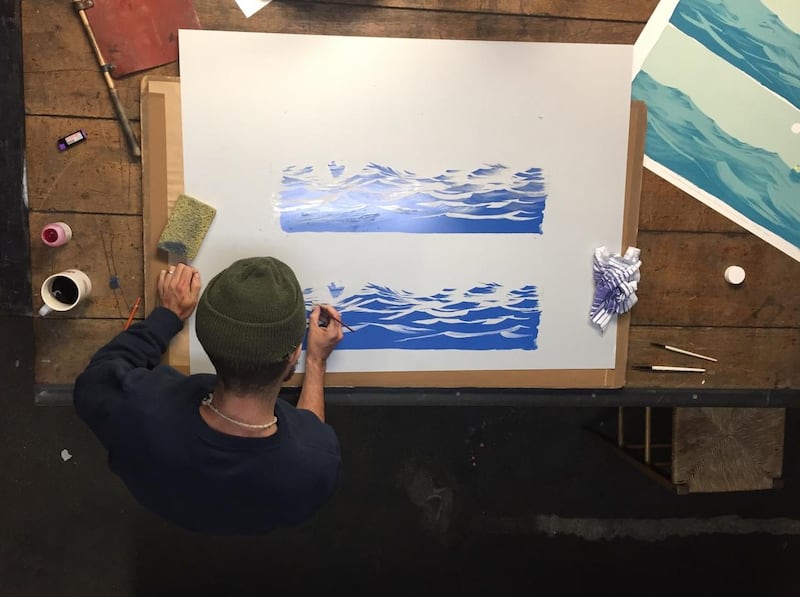
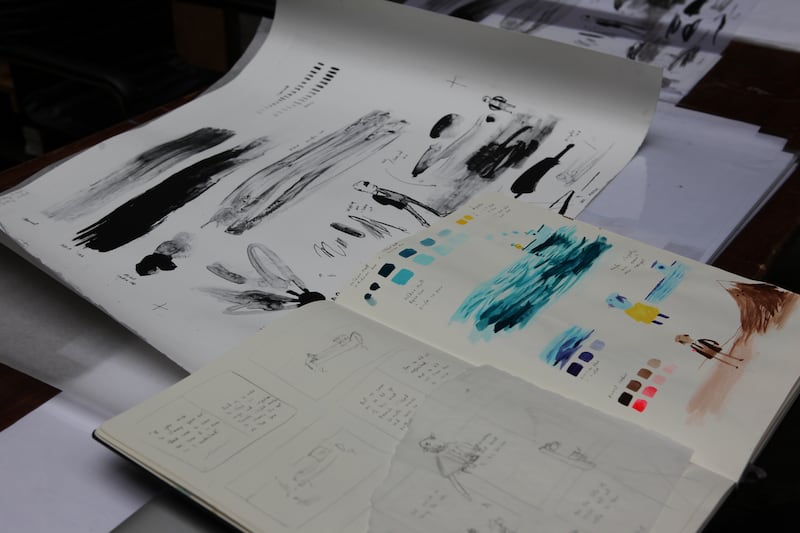
One must take Jeffers’s claims about his lack of imagination with a pinch of salt, as he has been a publishing titan of some regard for more than a decade. The author and illustrator of enormously successful works such as The Incredible Book Eating Boy, Lost and Found, and the Huey series, he has sold more than eight million books and taken on a host of side projects, including collaborations with the likes of U2 and John Boyne, as well as dips into animation and film.
In conversation he’s open, expressive and chattily disarming. We meet in a restaurant in Soho, in London, one of those increasing number of places that have detected some hitherto undiagnosed issue with tea bags and so deliver your brew pot alongside a wee sieve and saucer, so that you inspect each infusion leaf by leaf. He slices a croissant into pieces as he talks about his latest book, which is a little more strident than its immediate forebear, the heart-rending and joyous guide to our planet Here We Are, from 2017.
“Because I’d hit on something with Here We Are,” he explains, “with its themes of inclusivity and positivity, there was an expectation that the next book would be something along those lines. But by the time I’d had my daughter and things were progressing the way they were, it felt much more urgent that this would be the next book.”
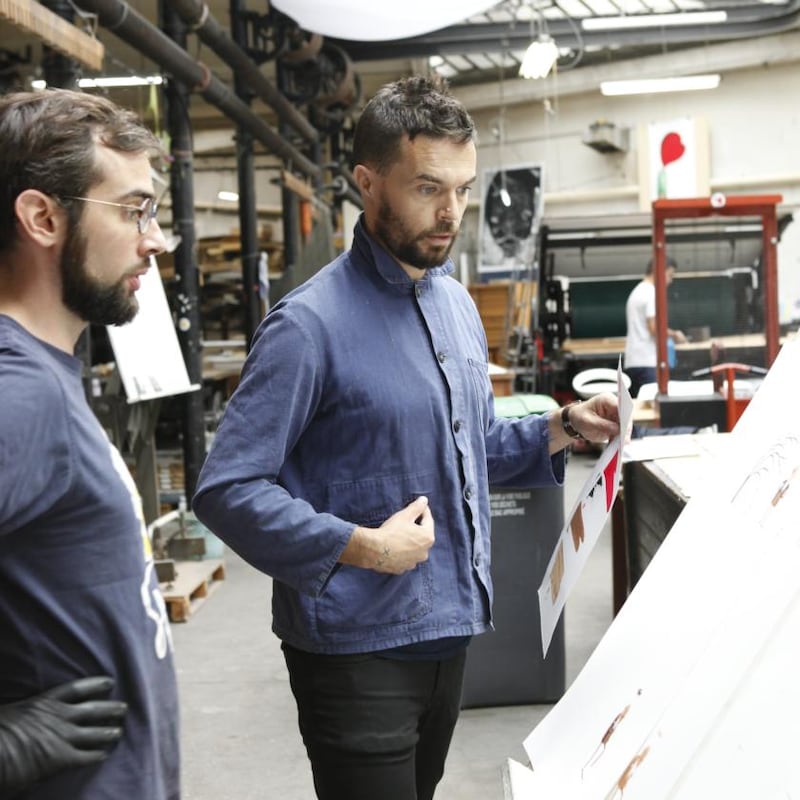
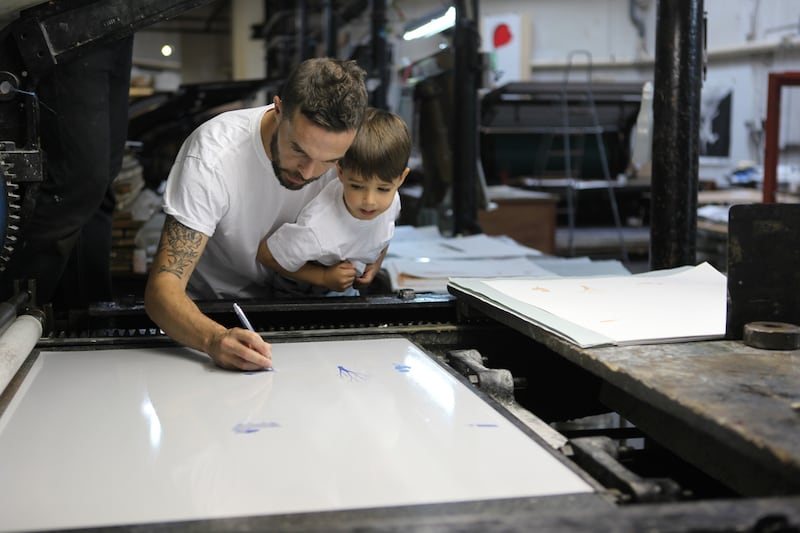
Here We Are was written for – in fact directly addressed to – Jeffers’s son, then an only child. It’s a field guide to our planet that showcases a joy of humanity and the environment, with a particular paean to tolerance and awe at what is around us. Foregrounded with Jeffers’ beautiful cartoonish renderings of the natural world, his sparse but wise accompanying text sits amid the delightfully fiddly, hyperdetailed illustrations like bitesize Buddhist koans. “We may all look different,” he writes, on a spread crammed with people of every race, culture and creed, “but don’t be fooled, we are all people.”
While exhibiting the same positive message about the environment, The Fate of Fausto is a more didactic tale, less a veneration of humanity at its best and more a self-conscious warning about the risks of people at their most venal and corrupt. Was this tonal shift caused by recent political frustrations?
“The reality is,” he says, “it was written almost five years ago. I’d come up with the idea for Fausto before I came up with Here We Are, but then, when my son was born, it seemed like a much more appropriate story for the time, because of its positivity, its inclusiveness, and Fate of Fausto got shelved. Now, it just felt more urgent for me to release it.”
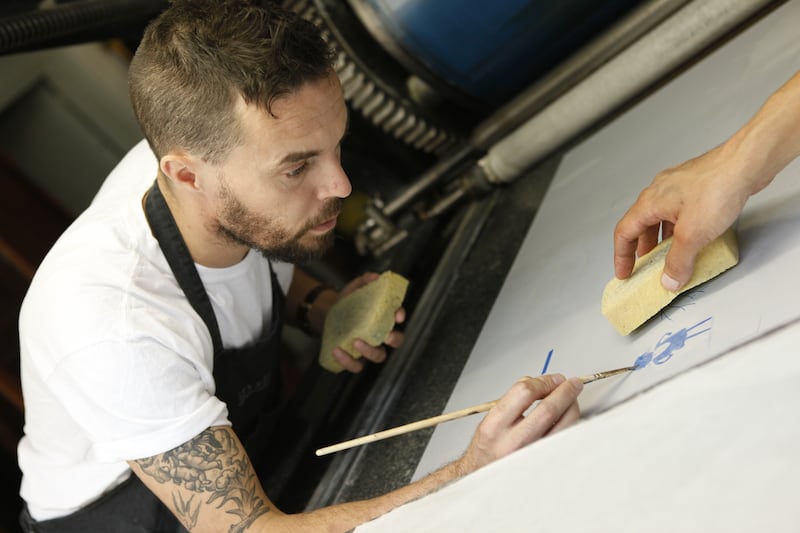
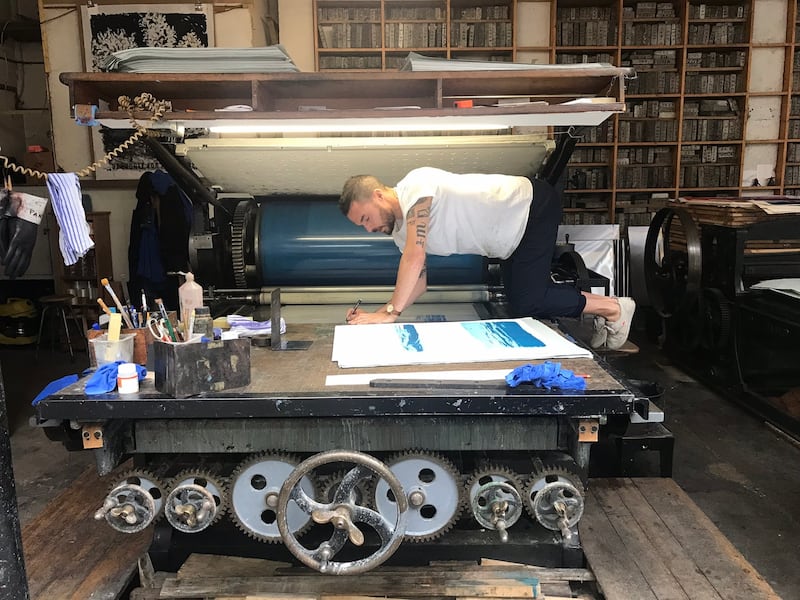
All talk of such urgency and relevance is to elide the fact that The Fate of Fausto is a gorgeous object in its own right, with a retro, painterly style generated by the care and craft that went into its production. “I wanted to make a book that honoured the traditional book-making techniques,” he says. “It’s smaller than usual. I was picking up classic storybooks from the 1920s and ’30s.” This involved using a 200-year-old lithography press (weighing as many tonnes) in Paris.
“We estimated it would take two weeks to make the whole thing,” he says. “It took more like eight or nine weeks. By the end of week one we only had one image.” During this process even the typeface used – “Chambord Maigre, from the 1930s – never been digitised” – was set by hand, giving the entire book the weight and heft of an older, more classic story. So classic, in fact, that Jeffers initially worried he had subconsciously pinched it from elsewhere.
“I had to check: Has this been told before? I had the same thing with Incredible Book Eating Boy – ‘Surely somebody has done this before.’ Then, looking around, you get the growing sense of excitement that, actually, nobody has.”
I tentatively suggest he should have called the book The Very Hungry Capitalist, in a nod to Eric Carle, and Jeffers laughs in a manner that, while supportive, suggests I shouldn’t worry about him stealing my idea any time soon.

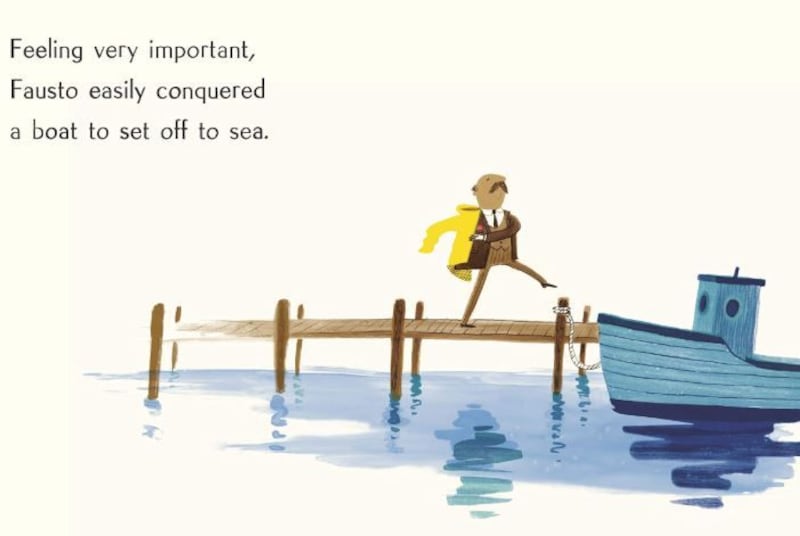
Having lived in New York for the past decade, he’s particularly keen to state that Fausto himself is not based on any specific, noteworthy greedy human being. Let’s just say it’s good he isn’t depicted as a blond.
“Despite the footnote stating it’s a five-year-old idea, there have already been comparisons to obvious candidates,” he says. “It’s not true, and I wouldn’t even do them the justice of thinking it’s about them.”
More generally, he says, it’s about the systems that create the avarice and greed that are destroying our planet, something that has become more pressing for him since he began raising children of his own. “It’s going to be a very different world to grow up in,” he says. “Our children will face very different realities than we did.”
Does this make him panic? “A little bit,” he says, “but the only thing that’s changed drastically in the last five or 10 years is people’s awareness of the reality and depth of the issues. There is a degree of addressing the threat of climate change in this book, but panic is not going to do anything other than, hopefully, what it’s already doing: jarring people into action.
“I do see change on the horizon,” he concludes, “but the point of the book is that saving the planet is the wrong story: we must save ourselves. The planet was here long before us. It’s ourselves and every other species that we put in harm’s way with overconsumption. The planet will be fine.”
The Fate of Fausto is published by HarperCollins Children’s Books


















